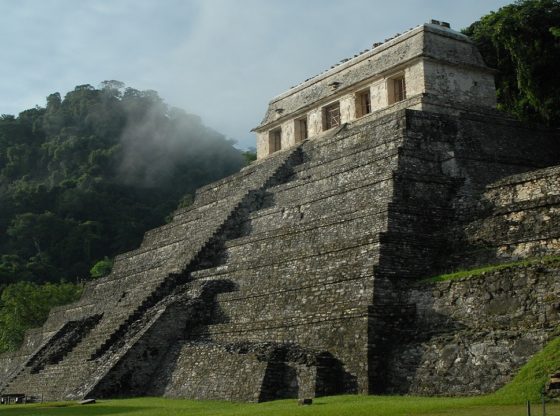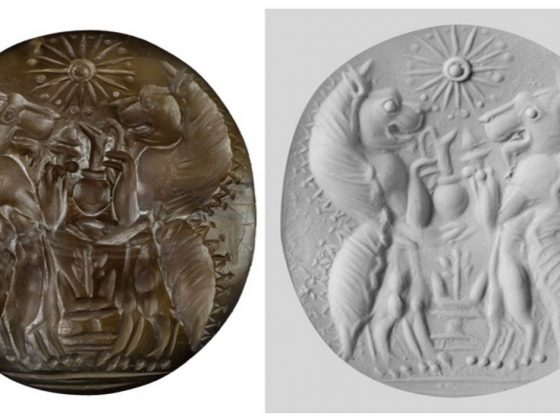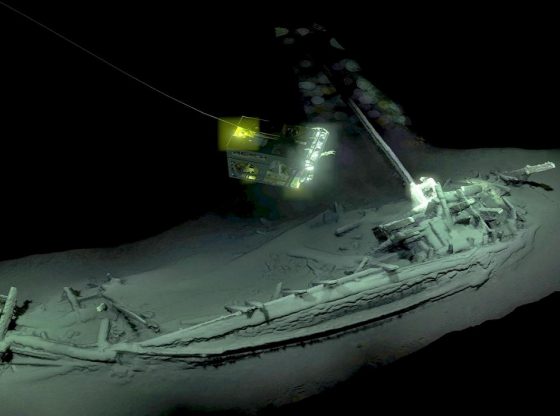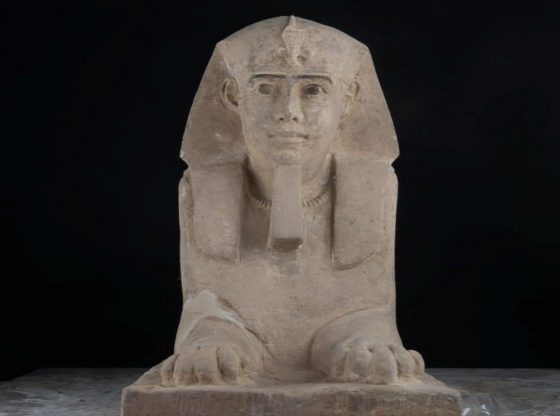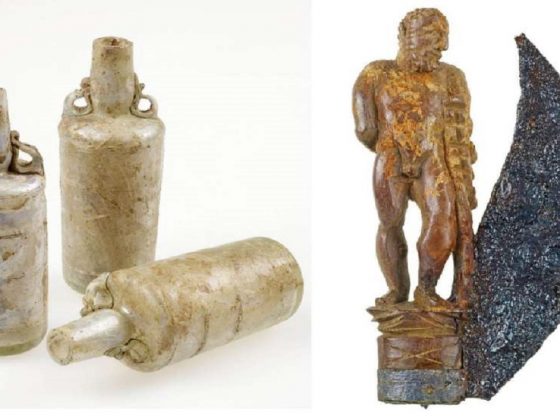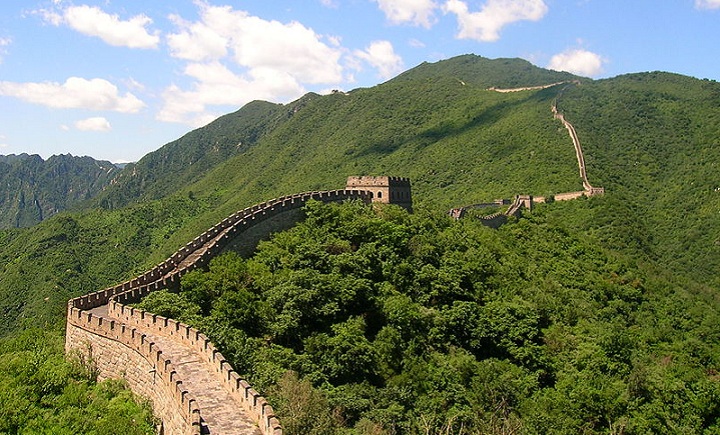
Ancient History
Within the eastern region that we today know as China, a kingdom has dominated the East since around 1,500 BCE. With its first known dynasty the Zhang Dynasty, according to Chinese tradition, the first imperial dynasty was actually Xia, but little is known about this ancient dynasty, that left no written records.
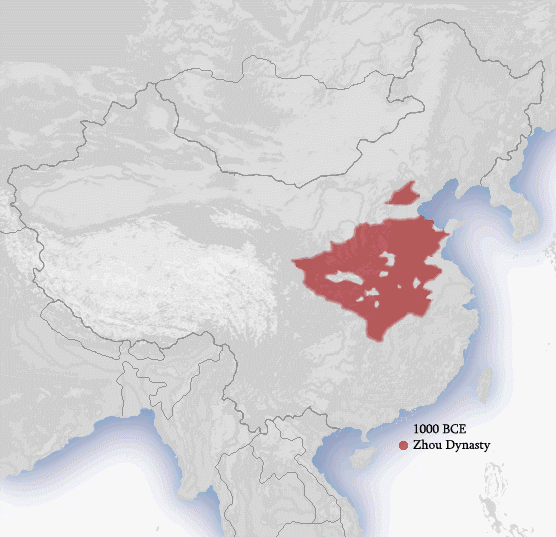
Around 1,050 BCE, the Zhou kingdom rose up against the dominant power the Zhang, and thus began the Zhou dynasty, lasting between 1050 and 256 CE. And as a so often reoccurring aspect, the Shou came to assimilate and inherit much from the conquered rival. Making a succeeding Dynasty able to affirm its own strengths, as well as its conquered rival.
The young Zhou kingdom grew in power and influence by conquests. They annexed surrounding states and created several vassal states. But the Zhou’s appetite for new lands and power were perhaps a little too big to swallow since what followed was instability and a steady decentralization of power to and among vassals. And when a vassal uprising occurred in 771 BCE, the Zhou emperor was killed and the kingdom never recovered.
Warring States period (475 to 221 BCE)
China now entered a period of almost constant warfare suitably named The Warring States Period, between 475 and 221 BCE. With only seven powerful states remaining in the region, these states competed for power.
During this turbulent period, society underwent radically changed. The Zhou dynasty’s younger days was a strictly hierarchical and aristocratic society. With the king (or emperor) at the top, directly underneath we find the noblemen of the aristocracy, the professionals in government, and then a lower aristocracy.
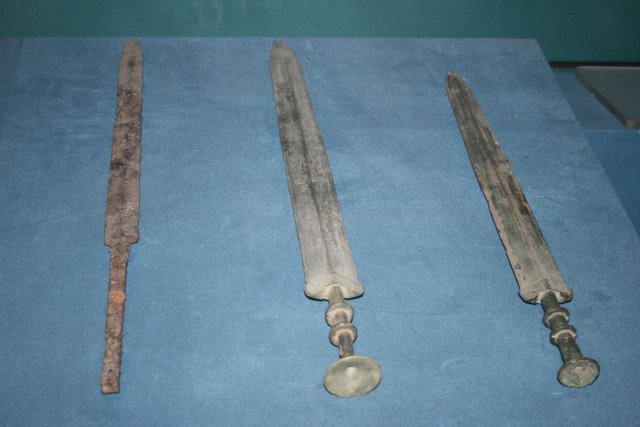
At the lowest level we find craftsmen, merchants, farmers and at the absolute bottom, we find serfs. By 221 BCE, this social division had changed. The aristocracy had lost much of its position in society.
Technological Change and The Art of War
The Chinese states also underwent technological and military changes. Armies were reorganized to consist mainly of huge amounts of infantry rather than the previous so important aristocracy using horse and carriage. The crossbow was developed and cavalry became more common. The changes in military technology also led to increased need for protection, with metal armor being more common among soldiers. The need for professional warriors and an organized army put pressure on skill and ability which implied that generals and officers were increasingly promoted for their skills rather than their social “noble” descent.
During the time of The Warring States, the famous author Sun Tzu wrote a study of how warfare is best carried out. He presented a more scientific and systematic approach to warfare, with a decreased sense of heroism, but the increased importance of discipline. The Sun Tzus Art of War was written around 353-403 BCE.
In it, Sun Tzu describes how a war should be fought swiftly to avoid economic losses: “No long war ever profited any country: 100 victories in 100 battles is simply ridiculous. Anyone who excels in defeating his enemies triumphs before his enemy’s threats become real”.
He emphasizes the importance of positioning in military strategy, to base strategy on conditions in the physical environment and the subjective beliefs of the other competitive actors in that environment. He points out that warfare requires quick and appropriate responses to changing conditions. He, therefore, differentiate between tactics and strategy, with planning in a controlled environment, but in a changing environment, competing plans collide, creating unexpected situations.
The developments also implied a greater importance for other professionals to sustain the army. With burghers and craftsmen being important aspects of the military. Since armies were only getting larger and were also to a large extent based on infantry. There was a natural need for a large recruiting base, hence a large population.
Attempts were therefore made to increase the population by increased agricultural output. Large building projects were carried out to dry up the marshes, expand irrigation systems and dig channels to provide water inland. Taxation of farmers was introduced in 600 BCE to help fund military expansion and increased bureaucracy within the competing states. The need for manpower to be recruited as soldiers also led to a steady decline of serfdom.
Economic development was considerable as archaeological evidence of cities, palaces, temples protected by high and thick walls indicates. With increased coin production and trade. Iron was now used on a large scale for the first time and the need for iron increased for military purposes but also as a raw material for tool production and to be used in agriculture.
Philosophy: Confucianism and Taoism
Before The Warring States Period had begun, religious and philosophical ideas flourished. With Chinese philosophers producing new ideas about the ideal form of society and political organization, the people and its meaning and place in nature and the universe.
Perhaps most famous of these philosophers were Confucius (552-479 BCE), a teacher, editor, politician, and philosopher. And his teachings came to be known as Confucianism. More of a doctrine with philosophical aspects of nature than that of religion. It emphasizes personal and governmental morality, the correctness of social relationships, justice, and sincerity. It is also a form of morality and state ideology, providing an organizational hierarchy in society and rules of living for people. With a perspective of life, nature and people’s place within nature and the universe.
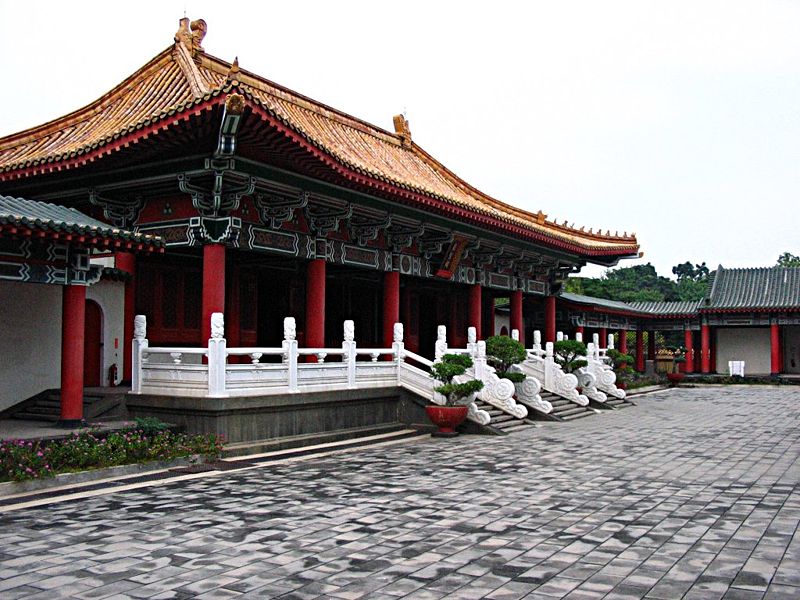
Confucius presented five relationships: ruler – subject, father-son, older brother-younger brother, husband – wife and older friend – younger friend. These relationships were according to Confucius important to life and stability in society. A quote from his morality code reads: “Do not do to others what you do not want to be done to yourself”. And another quote reads; “A superior man is modest in his speech, but exceeds in his actions.”. Confucianism evolved over time and by later followers and philosophers.
A little later (the 4th century BCE) another philosophy came in creation, Taoism. If Confucianism focused on morality and statesmanship. That the state should develop and work for its people. Taoism focused rather on the opposite: that the need to strive for improvement rather leads to the worse. That the state should not interfere in private life’s of the people but leave them alone. The followers argued that human beings and their actions should not be central, but rather have a broader perspective on life, the big natural order or the way “Tao”. The “way” becomes clear when one is in constant meditation with all thoughts being subconsciously regulated outside the state of mental stillness, although emotions will drive thoughts they remain an absolute choice. Taoist propriety and ethics may vary depending on the particular school, but in general, they tend to emphasize ‘wu-wei’ (action through non-action), “naturalness”, simplicity, spontaneity, and the Three Treasures: compassion, moderation, and humility.
Much later, Legal liberalism emerged between at around 400 and 300 AD. This was at a time of unrest in China, which implied a need and a strive for security and stability. And Legal liberalism offered this in the form of strict laws and procedures. Instead of which, as Confucianism regarded central, a strong state is dependent on its leader’s qualities and morals as a model. Legal Liberalism instead prescribed laws and procedures to make society and government more efficient and safe. This early form of the bureaucratic system was laying the foundation for a future China.
Qin (221 to 206 BCE)
The Warring States Period was coming to an end but China was still in the early 200s BCE made up of several smaller states. This will however change and China will grow both territoriality and economically, as well as demographically (population) and with this, its influence both regionally and globally.
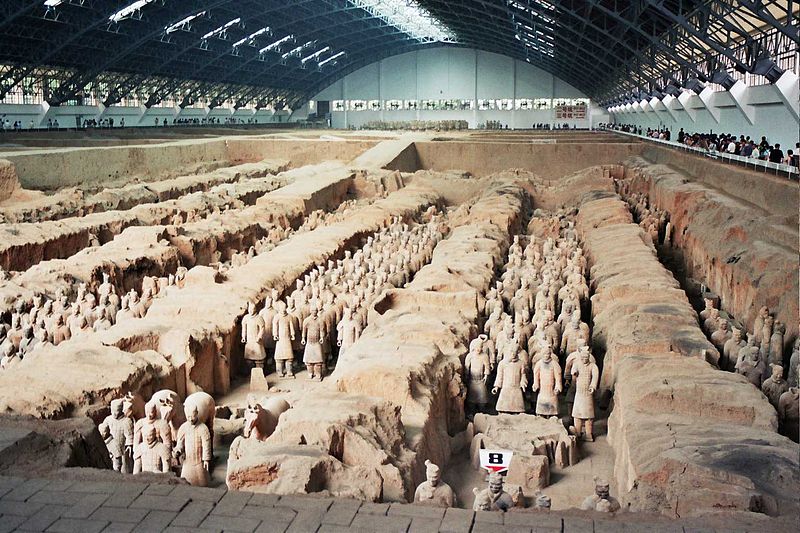
In 221 BCE a new era began in China, with Qin defeating all the remaining states and uniting all separate state and the whole region as China into one empire. And so the Qin Dynasty begins with the unification of China.
The Qin dynasty was organized according to an early model of legal liberalism and China underwent several reforms administratively, economically and militarily. And this meant big changes across China with the centralization of power and a series of standardization’s of language, as well as of units of weights, lengths, and monetary operations. Private property of weapons was banned. Many large building projects were initiated with roads and canals being built. Building commenced of The Great Wall of China. As a protection against nomadic and warlike tribes of the north, for example, the Xiongnu (known as the Huns in the West).
When Qin died, a period of instability began, as the heir to power was murdered and a struggle for power commenced with several resulting uprisings.
The winner in the power struggle was Liu Bang (Guazu). He was a man from the bourgeoisie, an indication of how society had changed towards a less hierarchical and weaker aristocracy. Liu Bang was the first of the Han, and so the Han Dynasty begins
Han (206 BCE to 220 CE)
Around this time in history, we had another great empire on the rise in the world to the west. The Roman Republic and later Empire would begin to rapidly expand across the Mediterranean following the Punic Wars (264 to 146 BCE). And on the other side of the world, China was now also established as an empire for the first time in history. Very similar to each other in many aspects, both held together by military might and a sophisticated centralized administration.
Chi Rise
China’s population would now increase substantially. The population is thought to have grown from about 18 million people to the census record of about 57 million people. Its territory also increased. With the Han Dynasty successful in stabilizing the empire, to increase economic growth and increase trade.
The Empire was divided into areas directly controlled by the central government, known as commanderies, and a number of semi-autonomous kingdoms. These kingdoms gradually lost all vestiges of their independence, though, particularly following the Rebellion of the Seven States
Legalism was lightened up, disliked laws were removed and taxes were also reduced. Instead, Confucianism was presented by the central government to be important for all aspects of state and life. The Dynasty began a tradition of dynastic government staffed by Confucian scholars.
The state involved itself more in economics, which was often not appreciated by ordinary people. For example, The state sold goods that were originally collected as tax. In 119 BCE the state took over private businesses and instead started state industries of iron, salt, and alcohol, which led to monopolization.
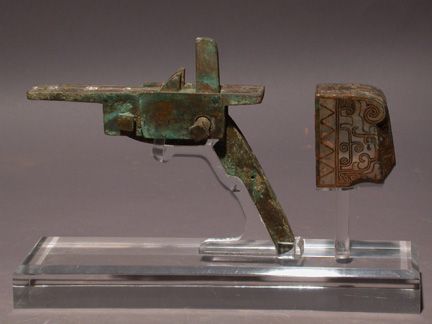
As China’s major proportion of the population consisting of farmers. The Han dynasty, just like the Roman Empire, was dependent on its large number of farmers. They were a source of taxes and labor for the state. And most importantly, they produced the vast amounts of food the growing empire needed. And to be able to achieve this task there were also many productivity improvements in agriculture.
A major weakness during the Han Dynasty was the hereditary succession of power. A fact that brought many child-emperors to power. With catastrophic consequences at times. There are plenty of examples of naive decisions, such as increased production of money, and state ownership of all gold. This aspect also came to be the fall of the dynasty. After a period of complete anarchy, with riots, and struggle for power. China was divided up among three warlords. The Han Dynasty came to an end in 220 AD.
Disunion
After the collapse of Han, a period of disunion known as the period of the Three Kingdoms followed. This period came to last from 220 to 589 AD. It was an era of ever-shifting power and power struggle. China was divided and then reunited for a short period between 280 and 360 AD. And over the next 200 years, China will be controlled by one, sometimes several dynasties simultaneously.The empire was ruled by one or more non-Chinese dynasties in the north, four short-lived dynasties in the south.
An important aspect during this period was the spread of Buddhism. It came to receive many followers in China. During times of instability and lack of security, people were naturally open to new ideas and this probably something that encouraged the spread of a new religion.
In 570-580 CE the long period of division ended however and a new centralized dynasty commenced with reunification under Sui.
Sui and Tang
The Sui Dynasty took over in 581 AD and lasted until 618 AD. This Dynasty reunited China again and conquered new territory, the north of Vietnam and led campaigns in Korea. The Sui ordered the building of the Grand Canal between the Yellow River and the Yangzi River, which enabled and simplified the transport of food and other goods. Trading over the seas grew in scope and importance, with faraway kingdoms in southeast Asia such as India and even more distant kingdoms.
The Sui Dynasty lasted for only two regimes and was then replaced by a short somewhat unstable period. Until the Tang dynasty takes over and a long era of economic and cultural prosperity began, 618 to 907 AD.
China and its capital Chang’an, was the cultural center of the East. Acting as a magnet for merchants, pilgrims, missionaries, and intellectuals. This made China more cosmopolitan than ever before.
During the early days of the dynasty, there were several major military campaigns. But with a big change in armies composition than previously. The armies came to be largely composed of mercenaries instead of domestic recruits. Such as Turks, Tanguts, Khitans etc. To be used in campaigns in Korea, Vietnam, and Central Asia.
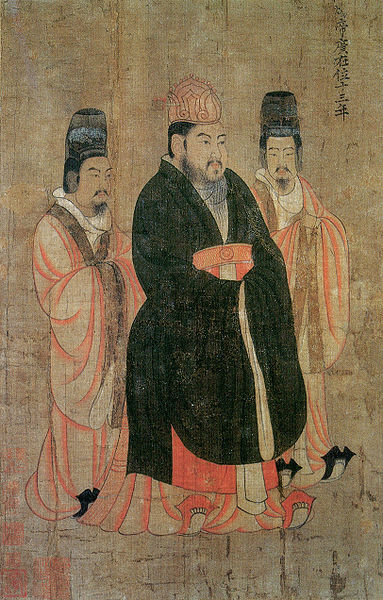
During the Tang, there was rationalization by the state’s division of administration in the Ministry. They built on an idea developed during Sui, with a form of examination by officials. A state school system was introduced to prepare the sons of officials for future examination. To increase competence and effectiveness of government officials.
Unheard of before, two women came to powers within the Tang. And the only woman to ever be proclaimed empress was Wu. She is considered a good leader in China, who managed to suppress rebellions and organize successful military campaigns.
Cosmopolitan China prospered and its two largest cities, Chang’an and Luoyang became metropolises with over 2 million people. Merchants and pilgrims from neighboring kingdoms such as Japan, Korea, and Tibet visited the capital. Several religions were practiced, Christianity, Zoroastrianism, Judaism, and Islam. But these did not have the same impact as Buddhism had achieved earlier. Instead, Buddhism continued to grow in popularity and in followers.
These aspects came to an end with the beginning of the Tang dynasty’s decline. Internal and external problems grew. A rebellion led by An Lushan caused great devastation and peace was first restored when a Turkish people allied with China to succeed in defeating An Lushan. However, the power was first returned by the Turks after having looted the capital in 763 CE and Tang then never quite managed to regain control over some provinces.
One warlord, Huang Chao, captured Guangzhou in 879 CE, killing most of the 200,000 inhabitants, including most of the large colony of foreign merchant families there. Then in late 880, Luoyang surrendered to Huang Chao, and on 5 January 881, he conquered Chang’an. The emperor Xizong fled to Chengdu, and Huang established a new temporary regime which was eventually destroyed by Tang forces.
Buddhists persecution began around 845 CE and more than 4 600 monasteries and 40,000 temples were destroyed. Persecution was to lessen over time and finally subside, but when the religion was accepted again, it never regained its former position.
The ‘Five Dynasties and Ten Kingdoms’ period lasted from 907 to 960. And during this half-century, China was in all respects a multi-state system with five regimes rapidly succeeded one another in control of the old Imperial heartland in northern China. Sections of southern and western China were occupied by ten, more stable, regimes so the period is also referred to as the Ten Kingdoms.
In 960, the Song dynasty gained power over most of China and established its capital in Kaifeng (Bianjing) starting a period of economic prosperity, while the Khitan Liao dynasty ruled over Manchuria, present-day Mongolia, and parts of Northern China. The Song dynasty is considered by many to be classical China’s high point in science and technology, with innovative scholar-officials such as Su Song (1020–1101) and Shen Kuo (1031–1095).


